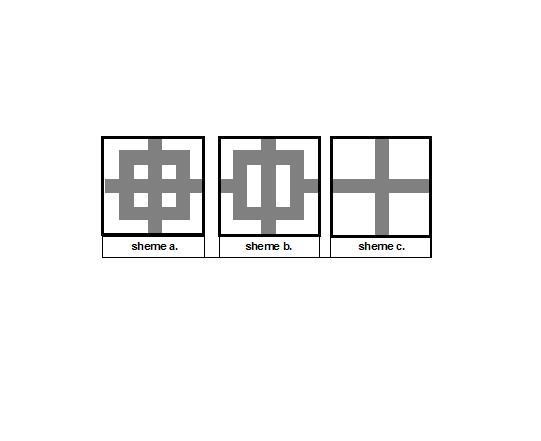Bezisten, a covered closed market place, was built in the 15th century by Gazi Ishak Bey, the Sultan's Skopje regent. It was destroyed by a fire in 1689 and was later rebuilt. The Bezisten has looked the same since its renovation in 1899.
The word “bezisten” is a composition of the Persian word “bezz” that means textile and the Arab word “stan” that means “selling point”. The name itself is the best explanation of the purpose of Skopje’s bezisten, which was dedicated exclusively to the selling of textiles. This massive and overwhelming object of oriental type is surrounded by shops on all sides. As time went by, its original function was extended to other businesses and crafts that could be found inside this object today.

H. Since you are trying to absorb as much of the ancient oriental Skopje as possible, let’s learn few words with Turkish origin, but widely use in Macedonian language.
Question (for H): Find out, what is the turkish-macedonian word for “jeweler, gold-craftman”:
Answers:
a. kuyundzhiya (9)
b. jorgandzhiya (4)
c. sarach (2)
I. Church of the Holy Salvation (macedonian: crkva Sveti Spas)
Constructed in the 16th century on the foundations of an older church, half of the church was built underground as it was illegal under Ottoman rule for Christian buildings to be taller than Islamic buildings so mosques could dominate the city skyline. The church got its present appearance in the 19th century.
Today’s church, built in the beginning of the 19th century, was based on old foundations dating from the 14th century. You will be amazed by the beauty of the 10m-long iconostases, made by master carver Peter Filipovski-Garka, his brother Marko Filipovski, and Makarie Frchkovski, who worked on the iconostasis from 1817 to 1824.
The grave of the greatest revolutionary Goce Delchev is located in the churchyard and is placed on three small stone pillars symbolizing the three parts of divided Macedonia.
Question (for I): The iconostasis in this church is carved in:
Answers:
a. marble (1)
b. wood (6)
c. stone (3)
And, finally: J. Mustafa Pasha Mosque (macedonian: Mustafa Pashina Dzhamiya)
The Mustafa Pasa Mosque, built in 1492 by Mustafa Pasa on an older Christian site,[17] stands above the Old Bazaar, near Kale Fortress. Considered one of the most elegant Islamic buildings in Macedonia, the complex includes the mosque, the tomb of Mustapha Pasa, the sarcophagus of one of his daughters, a fountain, and remnants of other buildings.
The mosque is square in shape and its largest dome is 16 metres (52.5 feet) in diameter. The porch is positioned on four marble pillars, decorated with stalactite, and covered by three small domes. The interior is decorated and includes calligraphic inscriptions. The minaret of Mustafa Pasa Mosque, rising 42 metres (137.8 feet) is made of limestone.
Mustafa Pasa is buried in the hexagonal marble turbe covered by a dome above a short eight-sided tambour. Umi, one of his four daughters, is buried in the decorated sarcophagus which includes Persian inscriptions on two of the four walls. The mosque courtyard is filled with roses and, due to its elevated location, offers a distinct view of the Old Bazaar.
Mustafa Pasha Mosque

Question (for J): There is a beautiful marble fountain for washing the believers in the front of the mosque, containing certain number of water taps. How many:
Answers:
a. 8 (8)
b. 10 (3)
c. 12 (0)
Now, you are ready to complete the cache coordinates, find it and log! Congratulations!
After finishing your hunt you might be very hungry. It’s the right time to go back to Bazaar and eat kebab,, oriental meat speciality (at “Destan”, for example), or gravche tavche,, typical Macedonian meal from backed beans (in “Snoshti minav”, or at “Serdarot”), or Turkish speciality lahmajun, (at “Gallery 7” at the 191 street, near Chifte Hamam and Suli Han, right). If you prefer sweets – have tulumba, baklava, or not so common but absolutely delicious yummy oriental sweets kazan dibe, trileche, ashure, (sweet shop “Ohrid”, near Kapan Han). Drink? Try boza, a popular fermented oriental beverage. It is a malt drink, made from fermented maize (corn), wheat, millet etc. It has a thick consistency and a low alcohol content (usually around 1%), and has a slightly acidic sweet flavor.
Sounds? Mix of modern, ethno, Turkish, folk, turbo folk, you just choose (or run fast away!) Every day, at 1 p.m. you’ll hear muezzin calling the Muslim believers for a pray.
If you want to see more and more and more, visit Sultan Murad Mosque, Clock tower, Yahya Pasha Mosque, Isa Bey Mosque, Kurshumli Han, Ishak Bey Mosque, Kale Fortress, ... and become a tourist guide through Old Skopje Bazaar!
Sources: Wikipedia, other internet sources. Photos: Internet and original (by Galejnik)